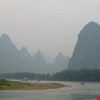
The Yangtze River Basin has been severely affected by climate change. To address this, the Yangtze River Basin Climate Change Vulnerability and Adaptation Report has been drafted to evaluate the impact on representative ecosystems and water resources, and pinpoint adaptation strategies. The experience has demonstrated that good adaptation measures should consider not only climate itself, but also other factors, such as economy, technology, as well as social and cultural norms.
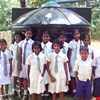
Aranayake, a secluded agricultural area known mainly for tea and spice cultivation, came to the limelight for tragic reasons with the Samasara landslide of May 2015. Caused partly due to climate change and partly due to anthropogenic influences, the landslide was a result of 6 days of constant high intensity rains. The incident also caused the highest number of casualties ever recorded in a Sri Lankan landslide.

The district of Tikamgarh has faced severe water scarcity. Action was thus taken to implement concrete measures to restore the water bodies in the surrounding area. Together with relevant stakeholders, the district administration initiated and implemented the project. The key lesson to draw from this case is the need for the participation by all relevant groups.
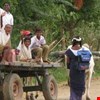
Poor management and planning during the construction of the Bargi Dam created severe social issues. The affected people took action by coming together forming a Union, making demands for fishing rights and protesting against the complete filling up of the dam. These demands were eventually met. This case illustrates the need for proper dialogue and participation with the affected people during the plan stage of any development projects to prevent problems during execution.

India is currently facing huge challenges in water management, including disputes on reservoir releases, over-exploitation of groundwater resources, degradation of wet lands, salt-water intrusion in coastal regions and shortages in drinking water supply. Action was taken to initiate a pilot research project to generate and disseminate knowledge. This case study illustrates that pilot demonstrations and capacity building are a prerequisite for promoting improved water management practices to all stakeholders.

Initial success resulted in the joint forest management strategy in Sukhomajiri being expanded. Unfortunately the successes of the original project were not replicated and the scaling-up efforts ended in rapid siltation. This has led to a discussion of possible IWRM implementation in the area. The key lesson learnt from this case is the importance of community involvement for successful community activity implementation.

Due to substantial population growth putting increased pressure on the water resources, their quality has started to deteriorate. This is perceived as a serious issue since water is inseparably linked with the socio, economical and cultural aspects of livelihoods. Action was taken through an integrated lake conservation programme, aiming to improve water quality. The most important lesson learnt is that awareness raising, education and stakeholder participation are essential.
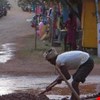
The city of Bhopal in Madhya Pradesh is mainly receiving its water from Upper Lake. However, in the past decades, the water quality has steadily been deteriorating. This has led the government to take action and implement an integrated lake conservation program. The case demonstrates that all the stakeholders, especially, Urban Local Bodies and the public representatives should be involved in the decision making from the very beginning of such projects.
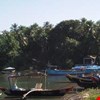
Groundwater depletion is a serious issue in India. The government has approached the issue of declining groundwater levels largely through regulatory means. For the policy to be successful, it is crucial that users understand groundwater occurrence, cycle, and limited availability. Much effort has thus been placed on engaging farmers and communities. This case study demonstrates the importance to work with capacity building and social mobilization rather than physical solutions.
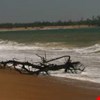
The Chilika Lagoon was subjected to environmental degradation. Action was taken by the Chilika Development Authority through the application of GIS and remote sensing tools for monitoring and assessment of the lagoon, resulting in significant improvement of the ecological health of the lagoon. The key lesson learnt is how a clear understanding of the coastal process and the river basin is essential for restoration of a coastal wetland.